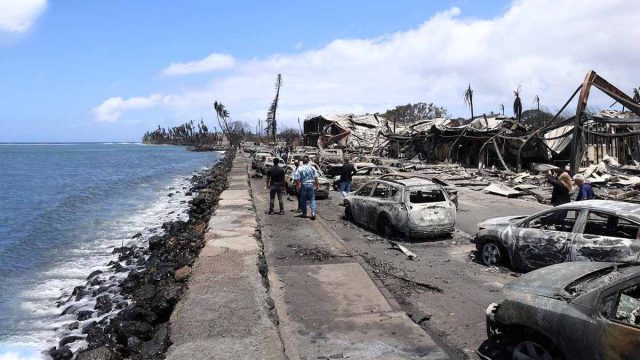The devastating Maui wildfires have claimed the lives of 80 individuals, leaving a trail of destruction in their wake. The smoldering ruins of Lahaina, a once-vibrant historic resort town, now stand as a testament to the rapid and merciless spread of the inferno. As the community grapples with grief and loss, questions arise about the effectiveness of early warnings and evacuation protocols.
Surpassing the tragic impact of a historic tsunami in 1960, these fires have emerged as Hawaii’s deadliest natural disaster in its history, marking a solemn chapter in the state’s journey. The catastrophe underscores the need for a thorough assessment of preparedness and response strategies to avert such devastating consequences in the future.
Authorities have alerted the public to the possibility of discovering additional casualties as search teams, aided by cadaver dogs, meticulously comb through the decimated landscape. The fire’s ferocity consumed over 1,000 structures and left thousands without shelter, triggering an immense challenge that will demand years of effort and billions of dollars to rebuild shattered lives and the community.
U.S. Senator Brian Schatz of Hawaii voiced concerns over the yet-unseen toll within the burnt structures, stating, “Unfortunately, we anticipate that the death toll will rise significantly as we gain access to the structures.”
In a solemn evening announcement, Maui County confirmed the heartbreaking escalation of the death toll to 80.
Although the Lahaina fire, which originated in the brush and swept through the town, is currently 85% contained, its destructive path serves as a sobering reminder of nature’s unyielding force. Concurrently, efforts to control two other wildfires on the island are underway, with containment percentages at 80% and 50%.
Three days following the catastrophic event, the presence of timely warnings for residents remains uncertain. Despite the existence of emergency sirens designed to signal impending disasters, they failed to activate during the fire’s relentless advance.
Governor Josh Green acknowledged the multifaceted challenges that hindered effective communication, including downed telecommunications and simultaneous firefighting operations. He asserted, “We are committed to a comprehensive review to understand exactly what transpired and how we can enhance our protective measures moving forward.”
The details surrounding the communication methods utilized to alert residents remain incomplete, raising concerns about the delivery channels and their effectiveness. Governor Green vowed to shed light on these aspects as part of the comprehensive assessment.
Maui County Fire Chief Bradford Ventura explained that the fire’s unprecedented speed hampered frontline responders’ ability to coordinate with emergency management officials for timely evacuation orders. The limited notice led to a scenario where residents had to self-evacuate, highlighting the need for improved communication and coordination.
County Mayor Richard Bissen shared his perspective on the catastrophic situation, acknowledging the fire’s swift progression and expressing the complexity of the circumstances. “This was an extraordinary challenge,” he stated, emphasizing the need to learn from the disaster.
As the community mourns and contemplates the path ahead, Maui and the entire state of Hawaii stand united in their resolve to honor the memory of the lives lost and to enact meaningful change to ensure the safety and well-being of all residents.
Explore Further Updates from The InCAP











